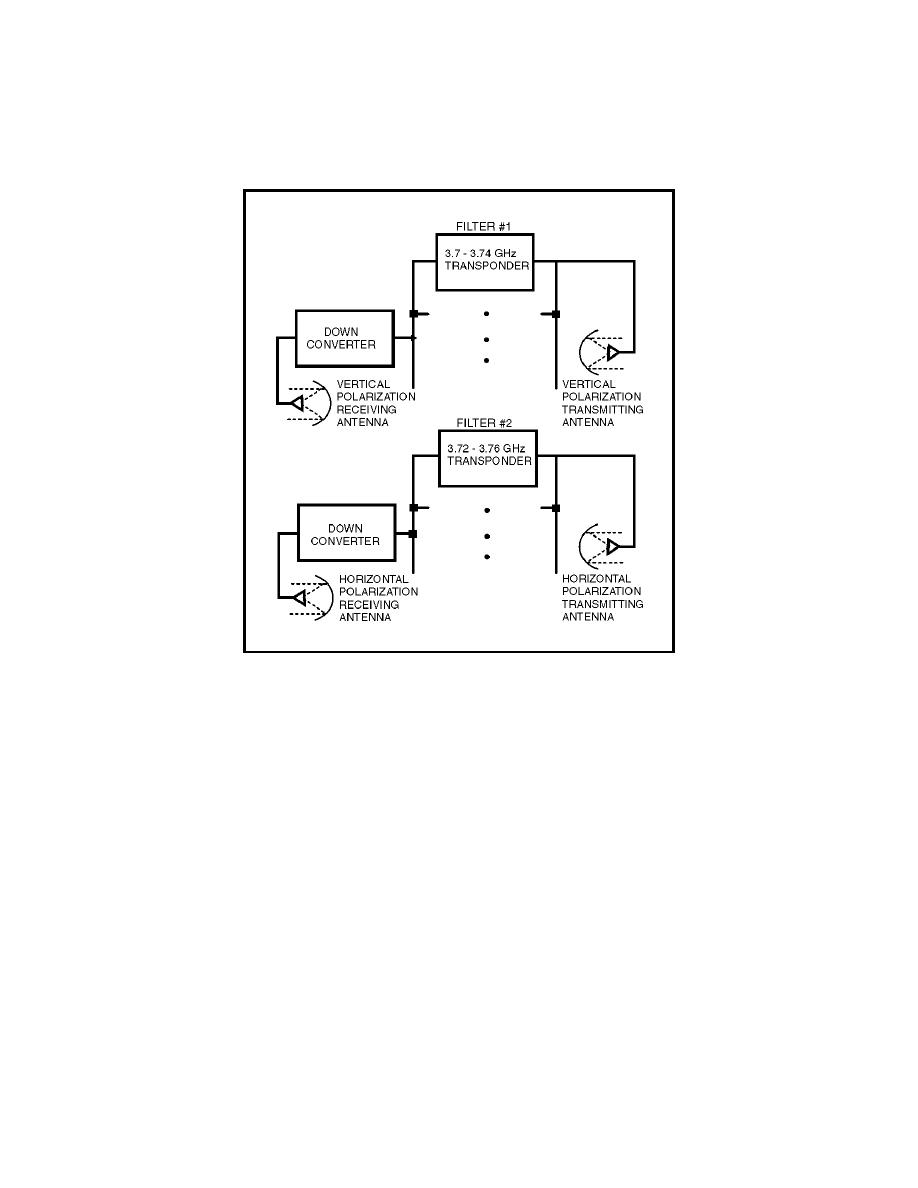
_______________________________________________________________________ Antennas
range on the horizontal polarization path without adjacent frequency
(co-channel) interference.
Figure 4-9. Satellite Transmissions Using Polarized Radiation
Advantages of Vertical Polarization
4-42. Simple vertical antennas can be used to provide omnidirectional (all
directions) communication. This is an advantage when communications must
take place from a moving vehicle.
4-43. In some overland communications, such as in vehicular installations,
antenna heights are limited to 3 meters (10 feet) or less. In such instances
vertical polarization results in a stronger receiver signal than does horizontal
polarization at frequencies up to about 50 megahertz. From approximately 50
to 100 megahertz, vertical polarization results in a slightly stronger signal
than does horizontal polarization with antennas at the same height. Above
100 megahertz, the difference in signal strength is negligible.
4-44. For transmission over bodies of water, vertical polarization is much
better than horizontal polarization for antennas at the lower heights. As the
frequency increases, the minimum antenna height decreases. At 30 megahertz,
vertical polarization is better for antenna heights below about 91 meters
(300 feet); at 85 megahertz, antenna heights below 15 meters (50 feet); and
still lower heights at the high frequencies. Therefore, at ordinary antenna
mast heights of 12 meters (40 feet), vertical polarization is advantageous for
frequencies less than about 100 megahertz.
4-13



 Previous Page
Previous Page
